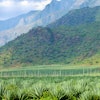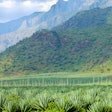Global corn demand has outstripped supplies in three of the last four years, and hospitable growing weather and corn varieties that mature faster from Monsanto and DuPont have led Canadian farmers to switch to corn as a viable crop, according to reports.
Canadian planters sowed a record 121,400 hectares of corn in Manitoba, Saskatchewan and Alberta in 2012, compared with an estimated 96.9 million acres sown in the U.S. Farmland values nationwide increased 27 percent from 2007 to 2011, to C$1,610 (US$1,616) per acre. U.S. farmland prices rose 19 percent in the same period, to $2,390 per acre. This new, expanded corn belt is turning Canadian farmland into a long-term investment play on global warming, said Tom Eisenhauer, president of Ottawa-based farmland investment firm Bonnefield Inc. “You can do a lot of different things here with a longer growing season,” he said.
The growth in Canadian corn is also encouraging Cargill Inc. to invest in grain storage in Canada, according to CEO Gregory Page, and the prospect of new demand is pushing DuPont Pioneer, a seed division of DuPont, to improve its short-season crop varieties.


















